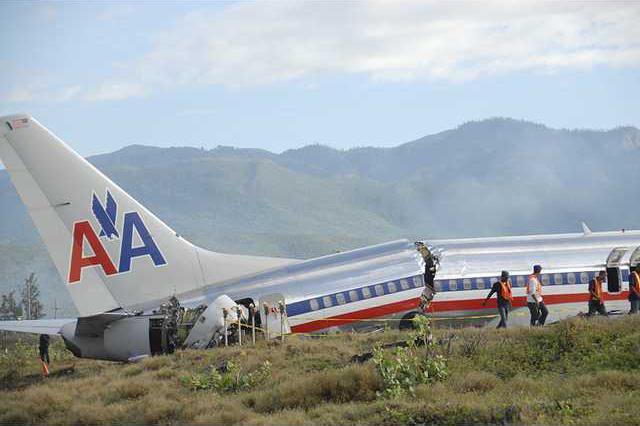Oscar Derby, director-general of the Jamaica Civil Aviation Authority, said it was not yet clear if that point of landing was a factor in an accident that injured dozens of passengers.
The plane's wheels made contact at around the 4,000-foot (1,220-meter) mark and the plane bounced once on the wet runway before the brakes engaged, Derby said. The target mark for the Boeing 737-800 was within the first 1,500 feet (457 meters) of the 8,910-foot (2716-meter) runway.
Investigators said they are still considering potential factors including pilot error or mechanical failure.
"We will be going to the analysis phase to rule out those things that are not factors and narrow down further to what is the probable cause," Derby said.
A call to American Airlines for reaction was not immediately returned.
Flight 331, which took off from Washington's Reagan National Airport and had stopped in Miami, skidded off the runway as it landed in Kingston in heavy rain on the night of Dec. 22. The fuselage cracked open in two places, the left main landing gear collapsed and the nose was crushed as the plane lurched to a halt on a rocky beach 40 feet (12 meters) from the Caribbean Sea.
All 154 people aboard survived. Ninety-two were hurt, none of them with injuries considered life-threatening.
A controller at Norman Manley International Airport advised the flight crew of a tail wind and offered an alternative runway, but the crew was cleared for landing after repeating its request for the first runway, according to the preliminary investigation. Derby said the tail wind was not unusually strong.
There is no indication the captain or co-pilot had any concerns about the approach, said Christopher Bickford, the chief investigator for the island's aviation authority.
After descending through the cloud cover, the crew saw the runway when the plane was between 700 feet (215 meters) and 1,000 feet (300 meters). The plane was traveling at 186 miles per hour (300 kph) when the wheels made first contact. It sped off the edge of the runway at 72 miles per hour (115.87 kph) before plowing through a perimeter fence, according to data from a flight recorder.
Bickford said the tires, braking system and the rest of the wreckage will be sent to the United States for further examination.

